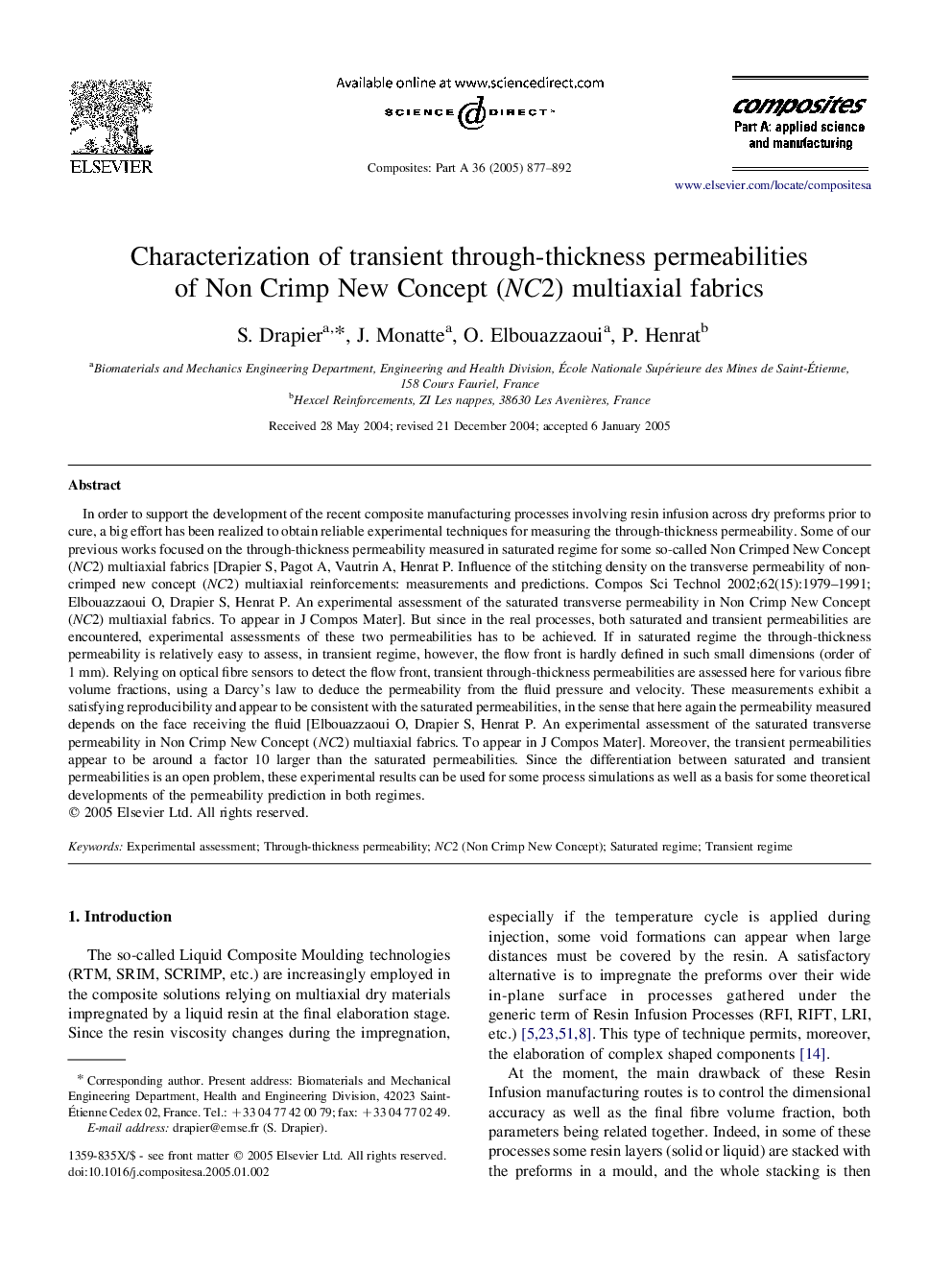| Article ID | Journal | Published Year | Pages | File Type |
|---|---|---|---|---|
| 10628202 | Composites Part A: Applied Science and Manufacturing | 2005 | 16 Pages |
Abstract
In order to support the development of the recent composite manufacturing processes involving resin infusion across dry preforms prior to cure, a big effort has been realized to obtain reliable experimental techniques for measuring the through-thickness permeability. Some of our previous works focused on the through-thickness permeability measured in saturated regime for some so-called Non Crimped New Concept (NC2) multiaxial fabrics [Drapier S, Pagot A, Vautrin A, Henrat P. Influence of the stitching density on the transverse permeability of non-crimped new concept (NC2) multiaxial reinforcements: measurements and predictions. Compos Sci Technol 2002;62(15):1979-1991; Elbouazzaoui O, Drapier S, Henrat P. An experimental assessment of the saturated transverse permeability in Non Crimp New Concept (NC2) multiaxial fabrics. To appear in J Compos Mater]. But since in the real processes, both saturated and transient permeabilities are encountered, experimental assessments of these two permeabilities has to be achieved. If in saturated regime the through-thickness permeability is relatively easy to assess, in transient regime, however, the flow front is hardly defined in such small dimensions (order of 1Â mm). Relying on optical fibre sensors to detect the flow front, transient through-thickness permeabilities are assessed here for various fibre volume fractions, using a Darcy's law to deduce the permeability from the fluid pressure and velocity. These measurements exhibit a satisfying reproducibility and appear to be consistent with the saturated permeabilities, in the sense that here again the permeability measured depends on the face receiving the fluid [Elbouazzaoui O, Drapier S, Henrat P. An experimental assessment of the saturated transverse permeability in Non Crimp New Concept (NC2) multiaxial fabrics. To appear in J Compos Mater]. Moreover, the transient permeabilities appear to be around a factor 10 larger than the saturated permeabilities. Since the differentiation between saturated and transient permeabilities is an open problem, these experimental results can be used for some process simulations as well as a basis for some theoretical developments of the permeability prediction in both regimes.
Related Topics
Physical Sciences and Engineering
Materials Science
Ceramics and Composites
Authors
S. Drapier, J. Monatte, O. Elbouazzaoui, P. Henrat,
